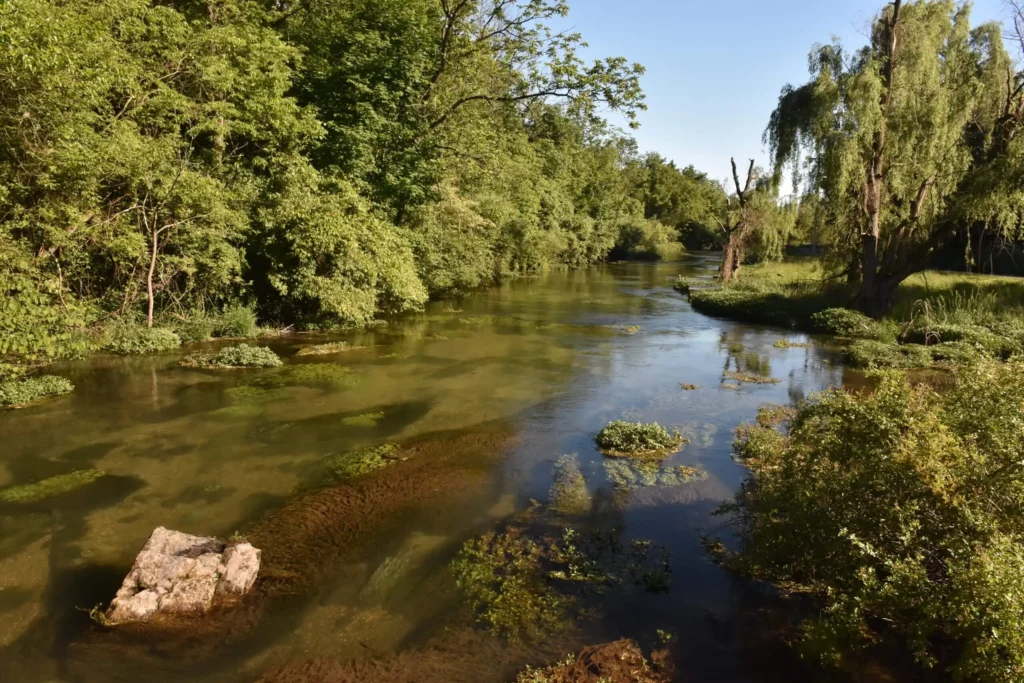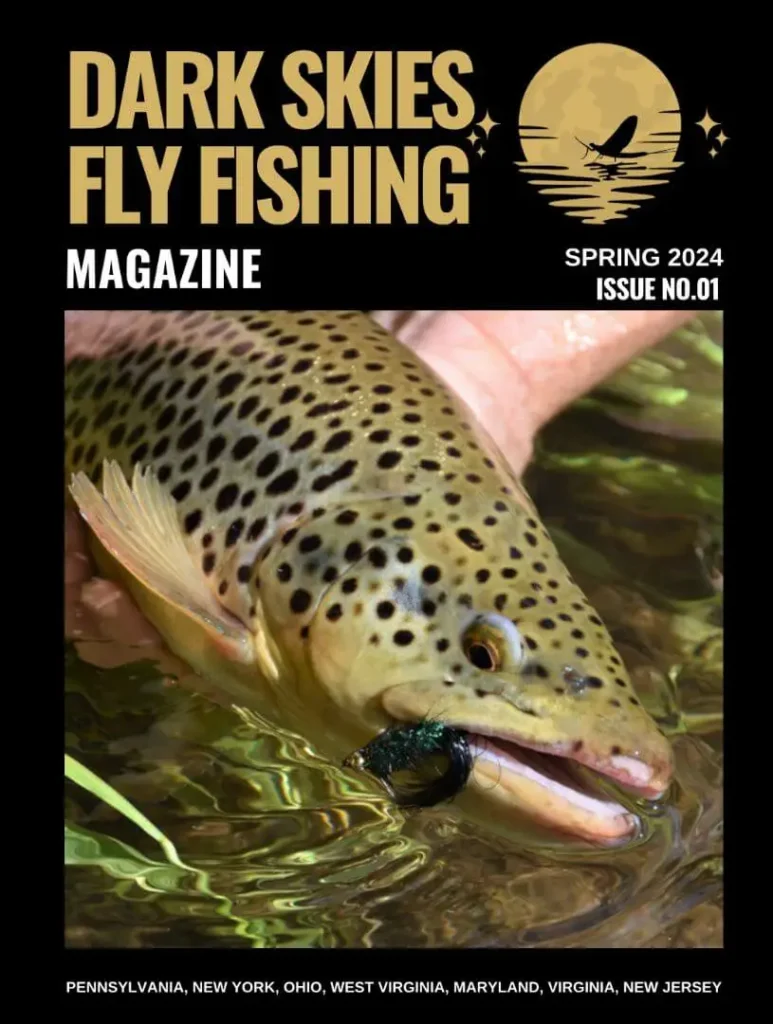Three Classic Trout Streams in the Cumberland Valley
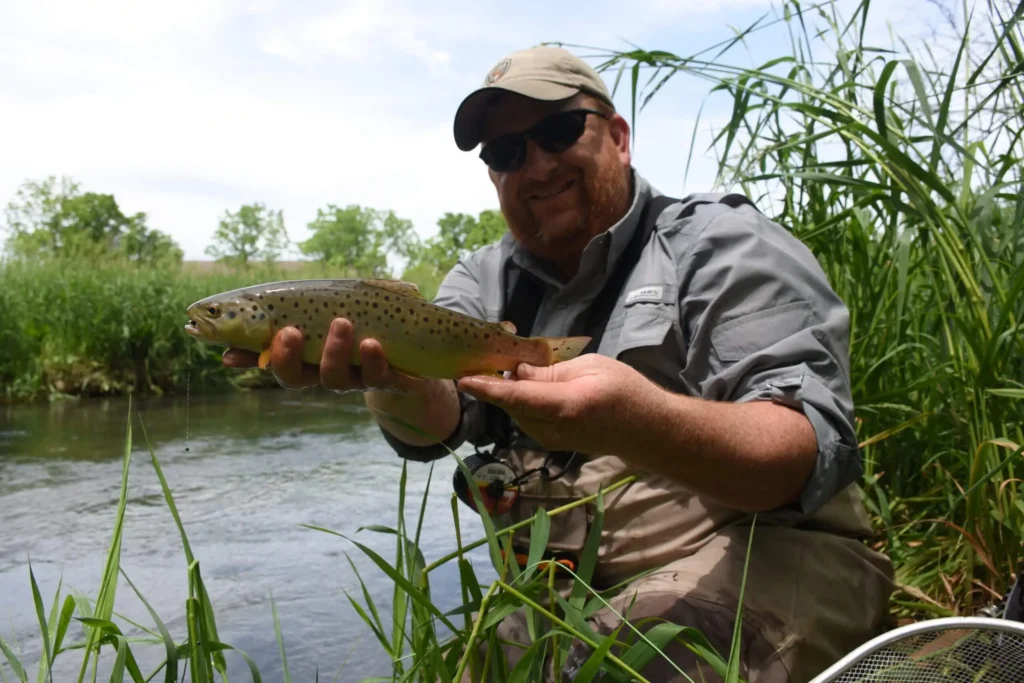
Hitting a marquee hatch on a famous stream is just part of the allure of the Cumberland Valley. For me, it goes deeper, down to the roots of fly fishing. These streams and these trout were made famous by Vince Marinaro, Charlie Fox, Ed Shenk, Ed Koch, and others, and the main waters here – Letort Spring Run, Big Spring Creek, and Yellow Breeches Creek – are bucket-list streams for many anglers, me included. Perhaps the best part of all is that each of these three streams offer vastly different experiences.
Letort Spring Run
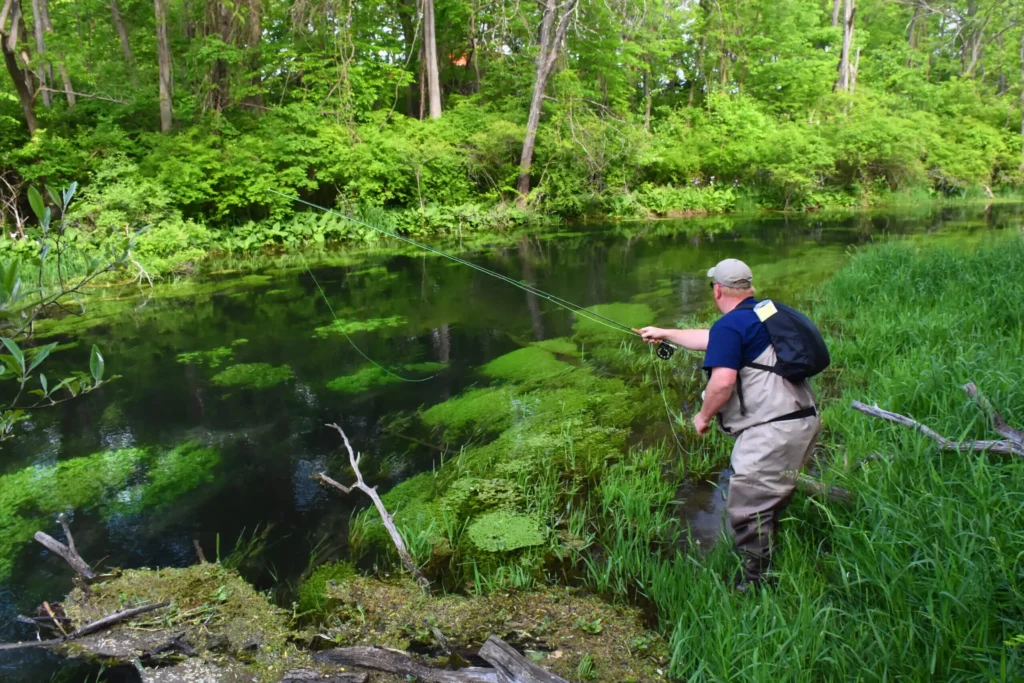
Letort Spring Run, “the Letort,” is a difficult place to catch a trout. It was described by Marinaro as “a hard taskmaster” and a lot of things must go right in order to fool a trout here, from how you approach the stream to how you make the cast to how loud you breathe and even how loud you think – these fish will spook at the drop of a hat! But perhaps that’s also part of the allure. I have no desire to be a competitive angler, but I enjoy a good challenge. When I first determined to fish the Letort, I sought advice from a local fly fisherman who advised I try somewhere else, which only made me want to fish it more. In fact, you can read about my first experience fishing there in the article “Hallowed Waters: Letort Spring Run” which is also posted on this website.
I first read about the Letort in the mid-1990s in an issue of Fly Fishing Quarterly. I don’t remember much about the article except that it mentioned the Letort sometimes produced big fish. What I remember most is the lead photo of a large wild brown trout caught there, its distinctive spot pattern, the olive-bronze of its back. It looked prehistoric.
Brown trout like that still exist in the Letort, but they’re not easy to catch, and they never were. In that regard, the Letort has remained consistent.
Letort Spring Run is a 9.4-mile-long tributary of Conodoguinet Creek, and much of it flows through and around the town of Carlisle. A 1.7-mile Catch and Release Fly Fishing Only section can be accessed almost entirely by using the Letort Spring Run Nature Trail. There are three entrances to the trail: Letort Park, Bonny Brook Road, and South Spring Garden Street.
The Letort is a classic spring creek in every sense, choked with watercress and elodea which make it almost impossible to nymph and surface currents that make it almost impossible to drift a dry fly. Some say to fish during the winter months when the weeds are gone, but I’ve found it difficult during these periods to get close enough to trout to even make a cast because there’s nothing to shield my approach. Others say only to fish when there are weeds, but it’s nerve-wracking just trying to get a good drift. I’ve spent approximately 20 days over four different months on the Letort the past few years, and I can tell you there’s no perfect time to fish it.
But what I admire about the trout in the Letort is that they always seem to be looking up. Occasionally you can find a winter Blue Wing Olive hatch, and in spring the Sulphurs make an appearance. And although the Tricos can be heavy in late summer, once the foliage starts to fill out, fly fishing the Letort means ants, grasshoppers, and crickets. This is the birthplace of terrestrial fly fishing, after all!
I enjoy creeping along the banks, sight-fishing to trout with a size 14 or size 16 winged ant or Shenk’s Letort Cricket. The most important aspect of this is the approach. Move slowly into position and just wait and watch. Study the currents. Don’t cast until you know exactly where you need to land your fly to put it over the trout. And often, I induce more takes when I land the fly in a spot that will carry the fly a couple inches on the near side of the fish rather than right over it. They’re more likely to move left or right to eat the fly than they are to take it straight overhead, probably because they see the line when it’s straight overhead.
If you’re hellbent on nymphing the Letort, you’ll do best using a straight-upstream approach. In most places, the weeds make the stream incredibly difficult to wade, and vibrations on the bank will likely send fish for cover, so move slowly and deliberately and try to avoid actually getting into the water. In these instances, long rods typically designed for Euro nymphing offer an advantage. They allow you to reach out and guide your nymphs through channels between weed beds.
Another tactic that has brought some of my biggest fish to net in the Letort is to fish with a very long line and swing wet flies and streamers. If possible, I swing the flies over top of the weeds, or try to target specific openings, even if the drift is only a couple feet. If a trout is hungry, it will sometimes hit as soon as your fly enters the opening on the swing.
People don’t go to the Letort to catch numbers of trout. Sure, if you hit it right, you can luck into a handful in a morning or evening session, but most of the time, “a trout” is reason to celebrate.
Big Spring Creek
I’ve heard Big Spring Creek described as “like the Letort except you can catch fish there,” and that’s fairly accurate. Part of the reason for that could be a high trout population, and another part could be that wild rainbow and brook trout are the primary species (not to mention the lower sections of Big Spring Creek are stocked with trout). But don’t take that to mean they’re pushovers. You can have a slow day on Big Spring as easily as you can on the Letort.
Like the Letort, Big Spring Creek is a tributary of Conodoguinet Creek. It begins approximately five miles south of Newville and is the fifth-largest spring in the state, and water temperatures stay consistently in the high-40s to low-50s year round. It has some Blue Wing Olives, Sulphurs, and Tricos. But Big Spring Creek differs from the Letort in that it’s not nearly as choked with weeds. You can actually fish the dang thing!
Big Spring Creek was on the verge of destruction as recently as 2001, when a state hatchery that had been built on the stream in 1971 was finally shutdown. In its 30 years of existence, the hatchery all but ruined the stream, but the 23 years since, and a whole lot of effort and restoration projects, have brought it back to life.
Big Spring Creek Road closely follows the stream for most of its length. Public access and parking areas are easily identified. A 1.52-mile Catch and Release Fly Fishing Only section begins 100 feet below the source of Big Spring downstream to Nealy Road Bridge.
Almost every trip to the Cumberland Valley involves a stop to fish Big Spring Creek, and I fish it in the same manner as the Letort. Stealth is key. No sudden movements and patience is often rewarded.
I’ll often stand still in a single spot for 10 minutes at a time just watching the water. In that time, I’ll typically see small trout dart from one clump of weeds to another. The bigger fish seem to simply move out from under the weeds and appear almost magically. You’ll look down and see nothing, and look down a second later and see a 20-inch wild rainbow trout finning in the soft current.
Yellow Breeches Creek
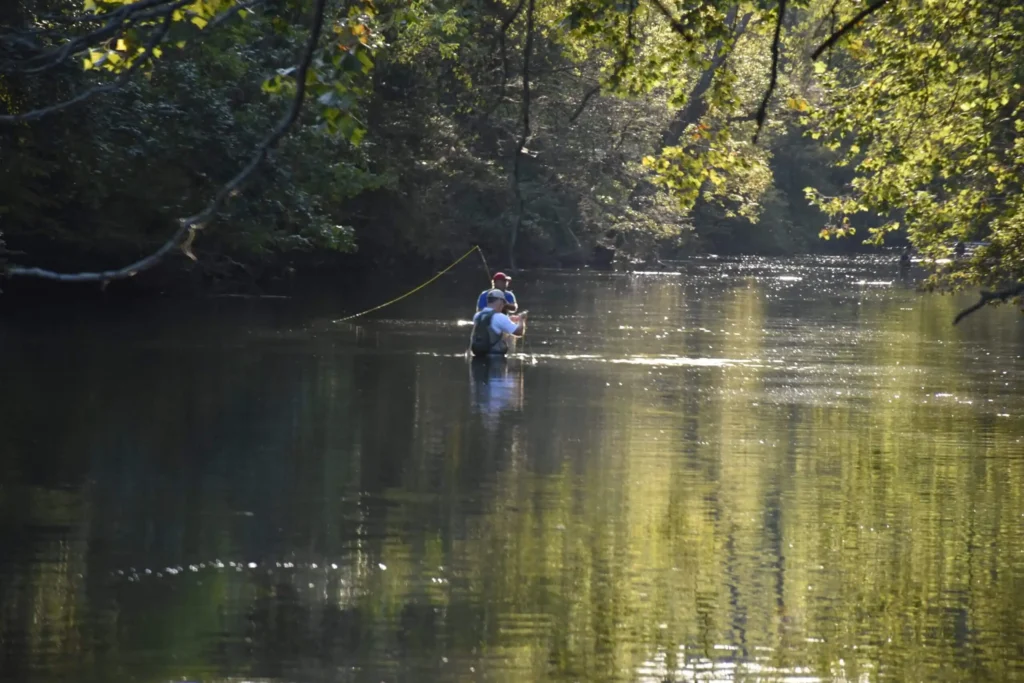
The Breeches, as it’s known, is the darling of the Cumberland Valley. It has excellent populations of wild trout, but it’s also heavily stocked every spring and fall. The most famous stretch of water on the Breeches, and perhaps all of Cumberland Valley, can be found behind Allenberry Resort. In fact, my first introduction to this region came on this stretch, fishing the famed White Fly hatch in early September.
Although Yellow Breeches Creek is a limestone-influenced stream, it often fishes like a freestoner. The trout aren’t nearly as spooky, mainly, I think, because of the stream’s higher gradient. The Breeches looks more like a typical stream with pools, riffles, and runs teeming with trout. In truth, I’ve never fished a section of this stream that I didn’t like.
Yellow Breeches Creek rises on the northwestern side of South Mountain in the Michaux State Forest and flows for nearly 50 miles before joining the Susquehanna River just south of Harrisburg. The stream has many of the well-known hatches including Blue Wing Olives, Grannoms, Tan Caddis, Hendricksons, Sulphurs, Light Cahills, Slate Drakes, Tricos, White Flies, and many others.
A 1.17-mile Catch and Release Artificial Lures Only section stretches from Boiling Springs down to the Allenberry. Access can be had via The Run in Boilings Springs at the outflow of Children’s Lake or by driving in behind the Allenberry. This section receives a ton of fishing pressure, but there are enough trout here for everyone. You’ll know when a good evening hatch is expected when you see folks lined up at certain pools a couple hours before dark. If you’re looking to hit the late-summer White Fly hatch, for instance, plan to get there early.
I’d wager that it’s impossible to fish Yellow Breeches Creek and not fall in love with it. That goes for all of the streams in the Cumberland Valley, in fact. There’s a reason these waters are so legendary. Sure, they’ve helped shaped history by providing a laboratory for some of the greatest innovators in fly fishing. More than that, they offer a fantastic variety for almost any taste. Simply put, Letort Spring Run, Big Spring Creek, and Yellow Breeches Creek are three of the best in the state, and they’ll make you want to come back again and again.
Need help planning your visit to the Cumberland Valley? Click here to view the Cumberland Valley Visitors Bureau website and find out more great places to fish as well as places to eat and stay while you’re there!
Did You Enjoy This Article?
Stay up to date with the Dark Skies Fly Fishing monthly newsletter for free and receive the latest posts in fly fishing news, tricks, tips, and techniques, stream reports, as well as updates on new flies added to the Online Store and exclusive discounts!
Sign Up NowHave a fly fishing question you’d like answered? Drop us a line at info@darkskskiesflyfishing.com! If we use your question in a blog post or in the newsletter, we’ll send you a FREE fly box with a dozen of our favorite nymphs and dry flies!

